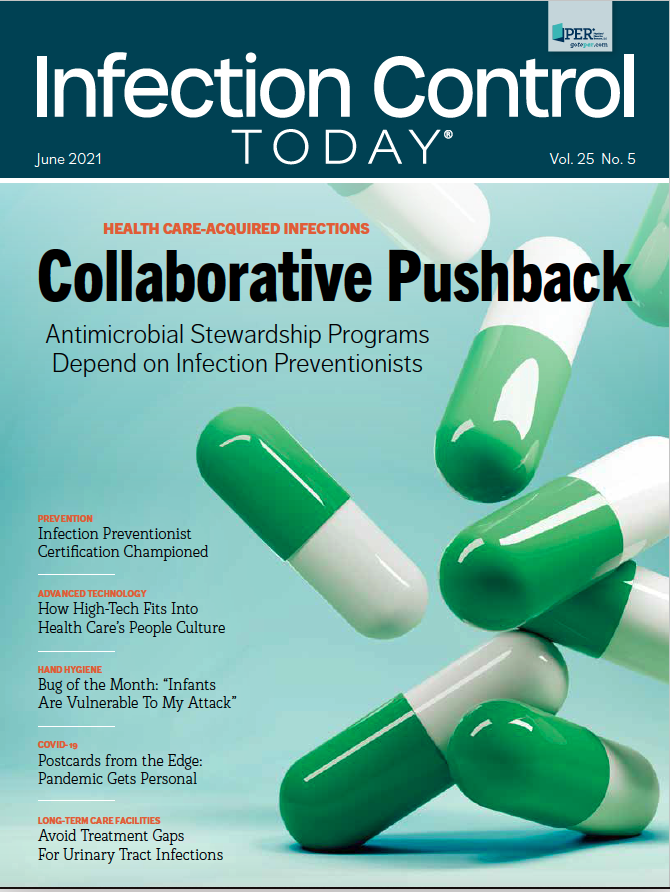Proper Treatment of UTIs Often Eludes Nursing Homes, Hospitals
Investigators University of Michigan-Flint, School of Nursing noted that the Cooper Tool and the Stone criteria are similar but use different methods to arrive at a UTI diagnosis.
When nursing home (NH) residents are hospitalized, they often receive treatment for urinary tract infections (UTIs) at the hospital before returning to the NH. That can cause a disconnect when it comes to treatment, according to a retrospective cohort study in the American Journal of Infection Control (AJIC).1
“A variety of guidelines are used with NH residents and hospitalized patients for many common diagnoses and treatments,” conclude investigators with the University of Michigan-Flint, School of Nursing. “However, data on hospital use of guidelines specifically designed for NH residents [are] lacking.”
The COVID-19 pandemic highlighted serious problems at NHs and other long-term care facilities (LTCFs), where the SARS-CoV-2 virus took advantage of systemic issues.2 NH officials agreed with that assessment early on in the pandemic, but countered that a lack of funding compared with hospitals and other health care facilities prevented them from beating back the disease.3 A similar lack of funding prevents many LTCFs from keeping a full-time infection preventionist (IP) on staff, something the Association for Professionals in Infection Control and Epidemiologyis lobbying for4 (until the cavalry and money arrive, however, there are cost-effective5 and innovative6 ways LTCFs can battle COVID-19 and other infections, as Infection Control Today® has reported).
In the AJIC study investigators compared 2 techniques for diagnosing UTIs: the Cooper Urinary Surveillance Tool algorithm and the Stone criteria. They wanted to “retrospectively determine whether hospitalized NH residents were appropriately diagnosed and treated for UTIs when comparing the Cooper Tool and Stone criteria. By comparing the Cooper Tool with the older, more recognized Stone criteria, we hoped to gain a clear understanding of diagnostic agreement with NH residents transferred to the hospital.”
The Cooper Tool and Stone criteria are similar, the investigators noted, but use different methods to arrive at a UTI diagnosis. “Cooper requires 2 or 3 signs and symptoms and an algorithm to guide the user toward or against urine testing,” they state. “The Stone criteria require a variable level of signs and symptoms depending on which symptoms the resident presents with, making it more intricate and less intuitive for the user.”
The investigators collected data from 3 NHs in southeast Michigan that had a total of 427 beds, from June 2016 to June 2019. Study participants had resided in the NH for 30 days or more. During that period, 621 NH residents were sent to hospitals and then transferred back to the homes, with 79 having received a diagnosis of UTI and been treated at the hospital. Nine of the 79 residents (11.4%) were appropriately treated using the Stone criteria, whereas 11 were appropriately treated using the Cooper Tool.
According to the investigators, “there was not a statistically significant difference in the proportion of those who were or were not treated appropriately when analyzed using the Cooper tool and Stone criteria.”
Less than one-third of the charts for the 79 residents contained urinalysis results. No urinalysis was ordered for a UTI diagnosis in some cases. “With both Cooper and Stone, the results indicated that a high percentage of UTIs were not appropriately diagnosed or treated,” say the study authors. “Statistically, both Cooper and Stone showed a moderate level of agreement and no statistical difference in the assessment of appropriateness of treatment.”
For noncatheterized patients, the 2 methods agreed 100% of the time. The Cooper Tool is easier for health care professionals to understand and use than the Stone criteria, suggesting it would be used more often.
“Appropriate treatments were seen more frequently with catheterized residents with both Cooper and Stone, a finding that could be related to the fact that such residents require fewer signs and symptoms to meet the diagnostic criteria,” the authors note. “For example, of those with a catheter, only mental status change, functional status change, [and] fever are required by Stone to meet sign and symptom criteria. These 3 signs and symptoms were the most documented in this study.”
UTIs continue to be one of the biggest problems in NHs, accounting for about 20% of infections at LTCFs, according to the Centers for Disease Control and Prevention (CDC).7 One of the problems associated with UTIs is that NH care often centers on using antibiotics, frequently inappropriately. It should be noted that, in many cases, hospitals inappropriately prescribe antibiotics for UTIs, so much so that the CDC recently launched an effort to cut down on such overprescribing by 90% by 2025.8
References
- Cooper D, Buterakos R, Wagner L, Tith J, Lee SYD. A retrospective comparison of guidelines to assess hospital-diagnosed urinary tract infection in nursing home residents. Am J Infect Control.Published online April 16, 2021. doi:10.1016/j.ajic.2021.04.001
- Kavanagh K. When COVID-19 knocks on nursing homes’ doors, systemic problems welcome it. Infection Control Today®. 2020;24(4):22-24.
- Diamond F. Long-term care facilities particularly vulnerable to COVID-19 (and criticism). Infection Control Today®. 2020;24(4):11-12.
- Diamond F. Nursing homes need full-time infection preventionists. Infection Control Today®. February 11, 2021. Accessed April 5, 2021. https://www.infectioncontroltoday.com/view/nursing-homes-need-fulltime-infection-preventionists
- Spaulding L. How to build cost-effective infection prevention programs at long-term care facilities. Infection Control Today®. 2020;24(6):24-26.
- Steiner C. How one long-term care facility held off COVID-19. Infection Control Today®. 2021;25(3):22-24.
- Healthcare-associated infection surveillance protocol for urinary tract infection (UTI) events for long-term care facilities. CDC. January 2021. Accessed April 15, 2021. https://www.cdc.gov/nhsn/pdfs/ltc/ltcf-uti-protocol-current.pdf
- Diamond F. Antibiotic stewardship programs need infection preventionists. Infection Control Today®. March 23, 2021. Accessed April 17, 2021. https://www.infectioncontroltoday.com/view/antibiotic-stewardship-programs-need-infection-preventionists

Newsletter
Stay prepared and protected with Infection Control Today's newsletter, delivering essential updates, best practices, and expert insights for infection preventionists.